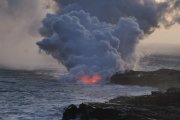
 |
Pu'u O'o Vent |
Although we weren't able to get quite as "up close and personal" with flows of lava as we had wanted, this hike was still the highlight of our Big Island visit, and possibly of our whole trip. We hiked over old lava flows and got as close as possible to Kilauea's currently active vent—Pu'u O'o. Henry and Sally were able to hike as far as the Park allowed, and got some wonderful evening views of the lava entering the ocean. The roughness of the terrain, coupled with the necessity to come back on it after dark, meant that Kathy couldn't get out as far, but hiking even a little while on the lava flow is a unique and unforgettable experience and, thanks to a lucky breakout of lava on a hillside (and a helpful ranger with a telescope), she, along with the rest of the gathered tourists, got a great look at Pele, the Hawaiian fire goddess, in action.
The drive along Chain of Craters Road from Crater Rim Road is relatively short and plenty scenic, with several pull-outs for viewing the features along Kilauea's eastern rift to the left and the ever-present Mauna Loa and Mauna Kea on the right. We learned that living on the flat Gulf Coast doesn't prepare you for how the ocean looks when you're heading down to it from a 2000-foot+ elevation. It was rather suprising when we realized that it wasn't the sky we were looking at as we approached the coast, but the hazy Pacific! Wanting to be sure we had enough time to make our hike, we stopped only once, at one of the last scenic overlooks on the road. Here's the picture from there, looking west along the southern coast of the Big Island:
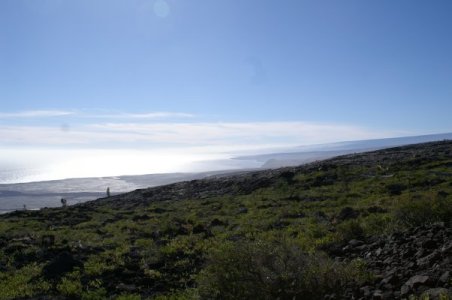
When you get to end of Chain of Craters Road, you park as close as you can to the turnaround, since you have to walk from wherever you park. We were told that often the parked cars wind a mile or so up the road, but we were lucky and got a relatively close place. Our timing was good, since we were probably a little early for the evening hikers and some of the daytime groups had already left. The incredibly ferocious wind might also have had a hand in discouraging some tourists from staying too long. But we were determined not to be turned back!
Here are some photos showing what Pele thinks of the Park's roads. Our guidebook says that you used to be able to take the road all the way around to Hilo, but lava flows have cut it off, as well as covering a village and a visitor center, not to mention some signage.
 |
 |
The first part of the hike is well-marked, with the little yellow reflective tabs that you can see in the picture on the left below. After that, though, you're on your own to blaze a trail, guided only by a series of beacons (about 7 or 8; Kathy made it to the 5th one before turning back) that are spaced about a quarter of a mile apart. On the right below is Henry at #1. The beacon behind you and the beacon ahead are usually visible as you clamber over the broken lava. But the sun and the steam from the vent are other good navigation markers during the daylight. After dark, the blinking lights on the beacons are all you have.
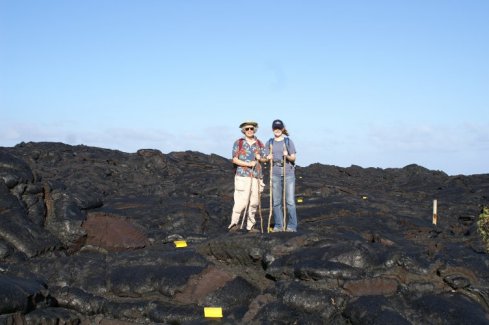 |
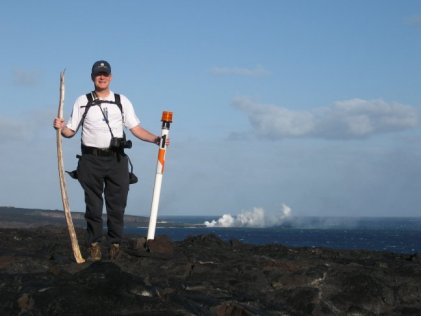 |
The closer you get to the active vent, the more dire the warnings. Here's beacon number 2, and the distant goal, the steam where the Pu'u O'o lava enters the sea:
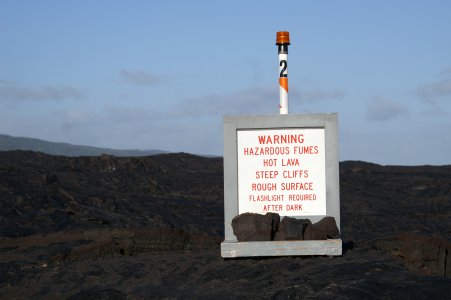 |
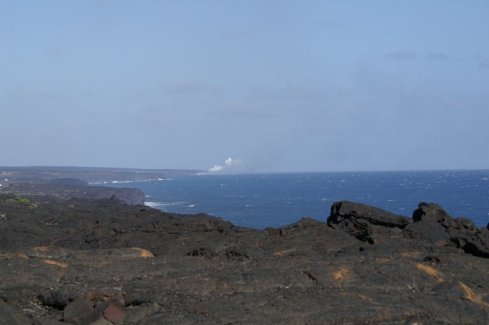 |
The solidified lava makes for rough going sometimes, but it's not as difficult to find a straight path on it as it is sometimes on Enchanted Rock, for example. And the lava itself is beautiful and infinitely various. I'd recommend taking a short hike on it even if you don't have the time, or the stamina, to make it out to the beacons. Just enjoy being on such unique real estate! Here are a couple of close-ups of lava formations, and a look at the viewing area the rangers set up for those not wanting to take the long hike, but from where you can see the steam plumes well and get a good sample of lava hiking (the cones are marking especially hazardous terrain):
 |
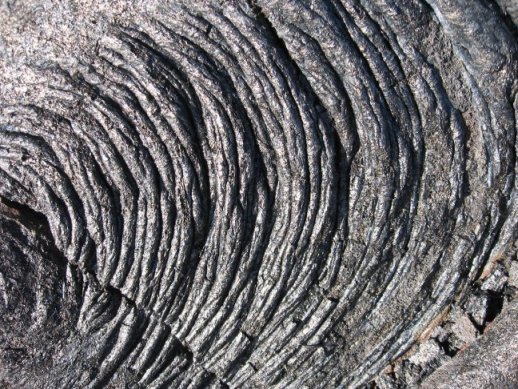 |
 |
|
The pictures below can give you an idea of what the lava field looks like. It seems to go on forever! At least until it meets the sea and the sky... (the difference in the color of the lava is due to the difference in cameras; the blacker tint on the left is closer to what I remember)
 |
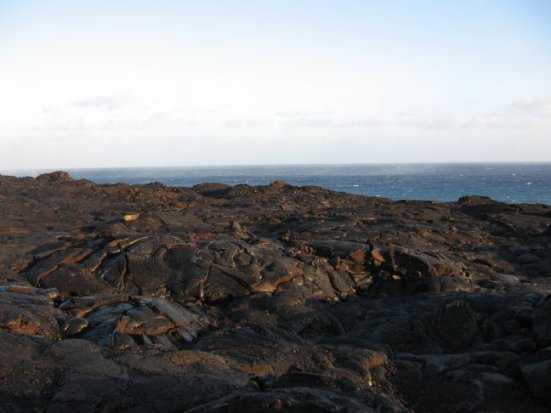 |
Here's a picture of Kathy just before she headed back to "civilization," and a picture of the same area, sans tourist:
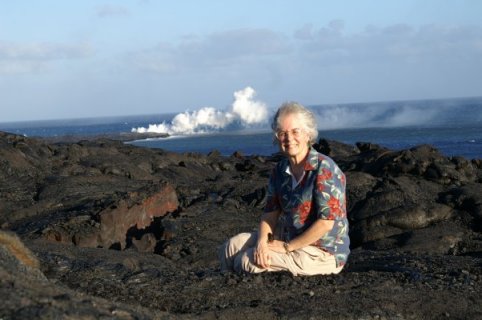 |
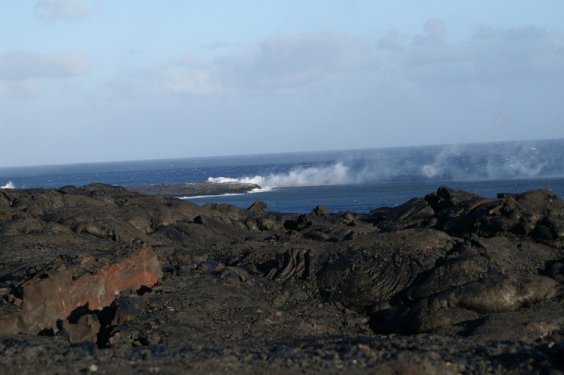 |
Here are some more views of the lava field, with the steam getting closer
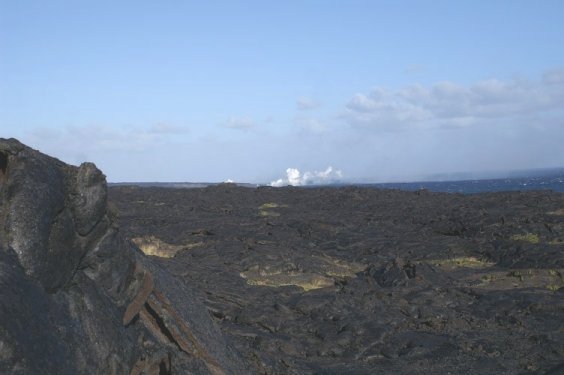 |
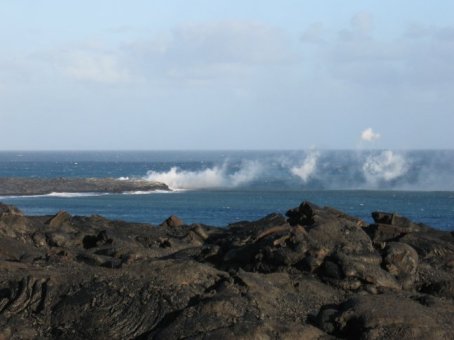 |
There are actually two points where the lava is entering the ocean, as you can see by two steam plumes in the photo on the left. The larger vent is the one to which you can get closest, as you see in the photo on the right, taken in between the two:
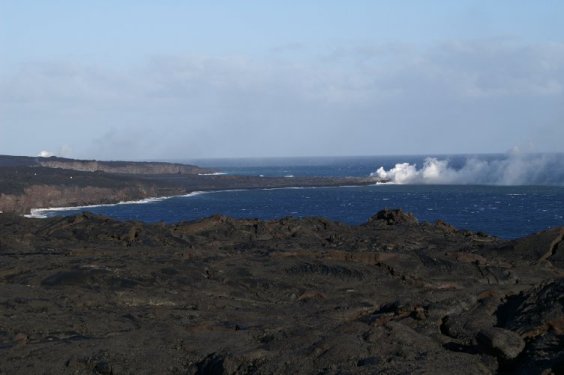 |
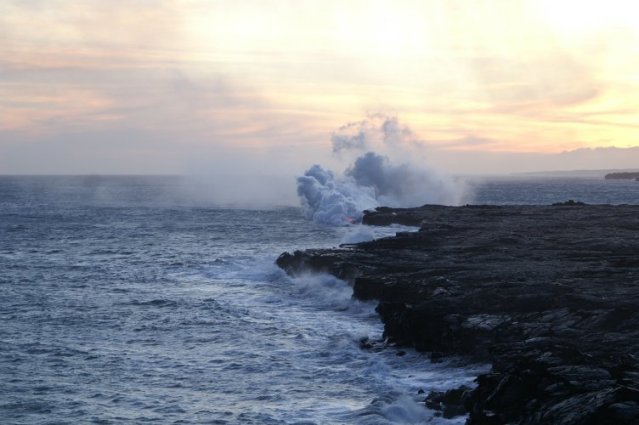 |
Here are some more fantastic shots of this incredible sight.
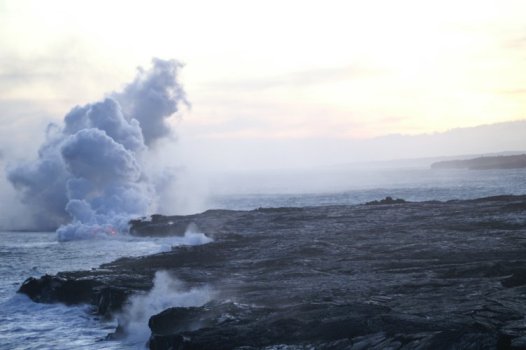 |
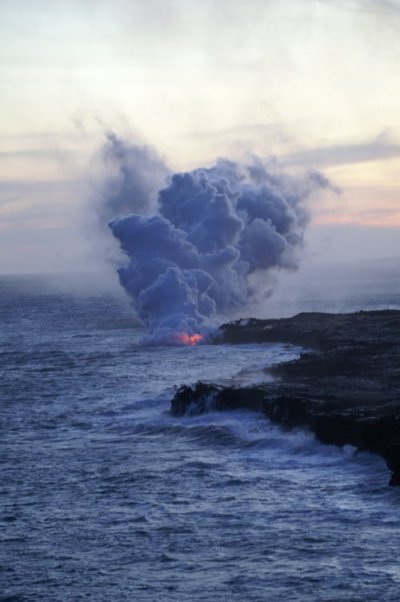 |
 |
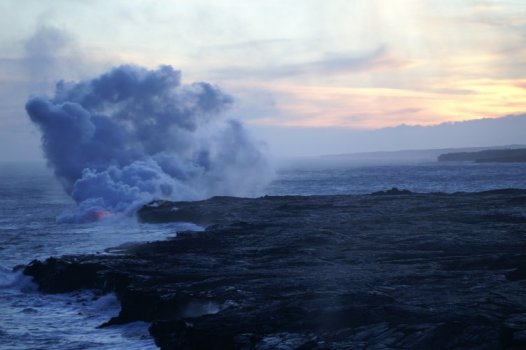 |
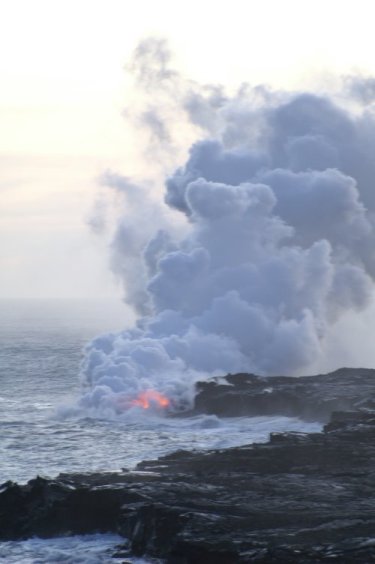 |
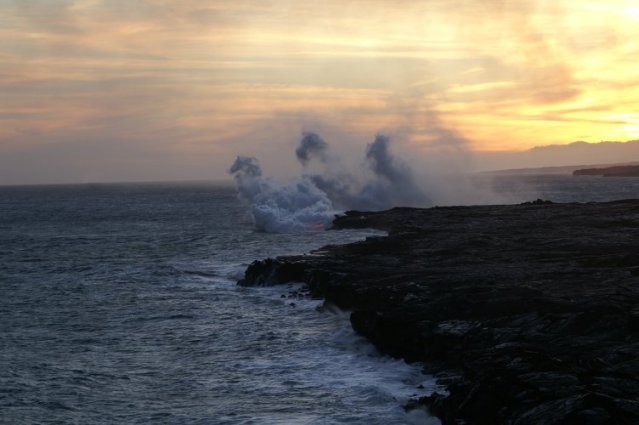 |
As you can see above, not only did we have the sea crashing into the cliffs, the steam from the lava (and occasional glimpses of Pele's fire itself) but there was a beautiful Hawaiian sunset to take in. The photo on the right below is looking back at the bulk of the Big Island, while the others are looking out over lava and sea.
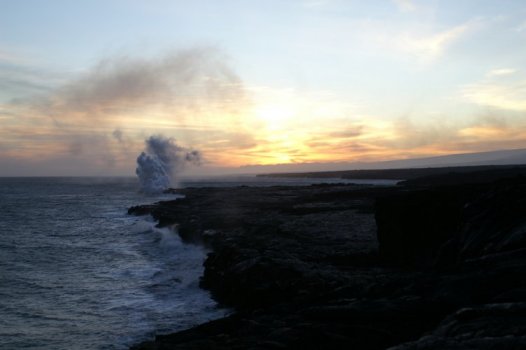 |
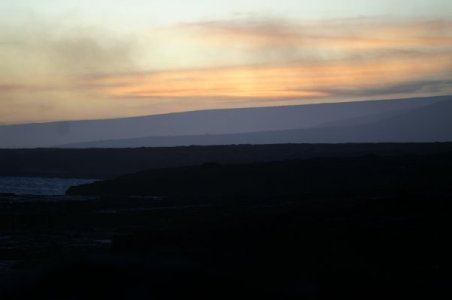 |
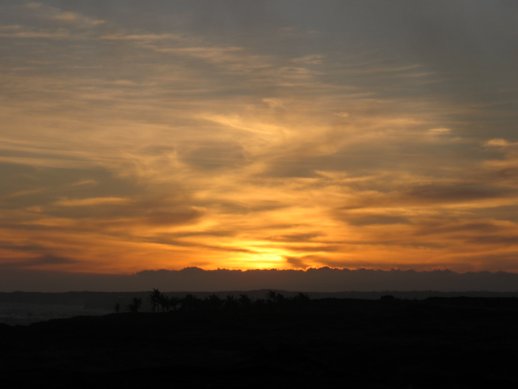 |
|
Of course the fading light started making picture-taking difficult, but as Henry commented, it was just hard to stop taking pictures! Here are some more of his shots of the vent, including one that was really wobbly, but it showed the lava so well we had to keep it:
-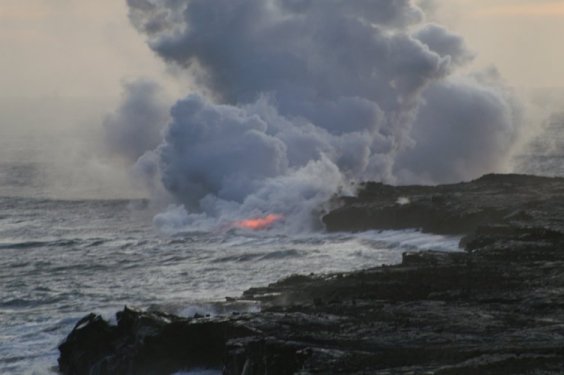 |
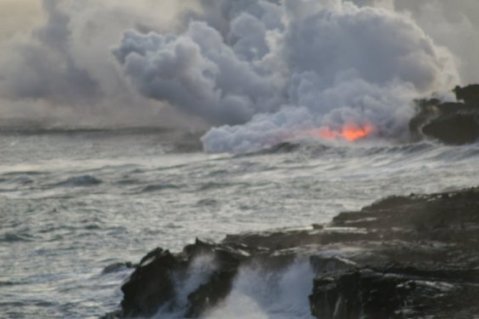 |
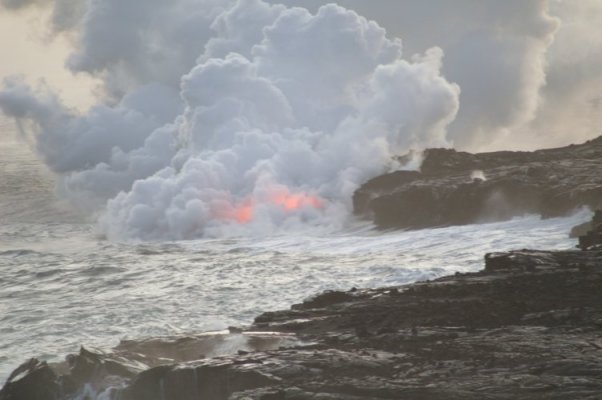 |
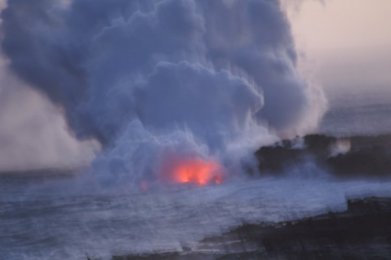 |
Here are a couple more lovely shots of the orange lava against the darkening sky:
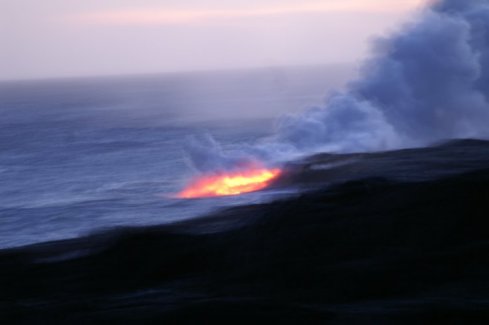 |
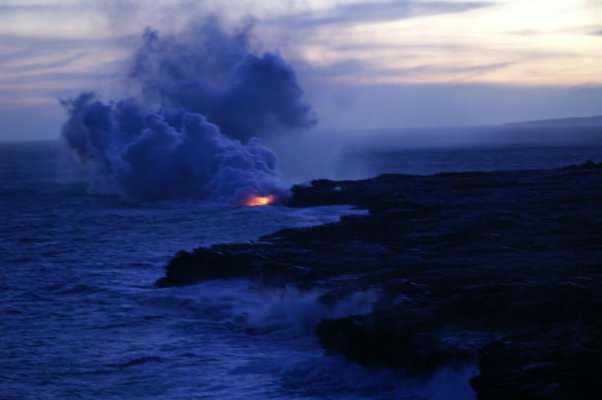 |
But seaward wasn't the only direction to look for fireworks during our visit. The rift leading from the main Kiluaea caldera down to where we were decided to break out onto the surface of the hillside, and the darkening sky enabled us to have some great views of lava flowing over the ground. It was easy to see with the naked eye after dark, and even better through binoculars, telephoto lenses, and, especially, through the ranger's telescope at the viewing area. Here is a picture of the hillside with steam billowing up from the main vent, but before the breakout became visible and a shot of the hillside just at dusk, when you could barely see the little ribbon of lava.
 |
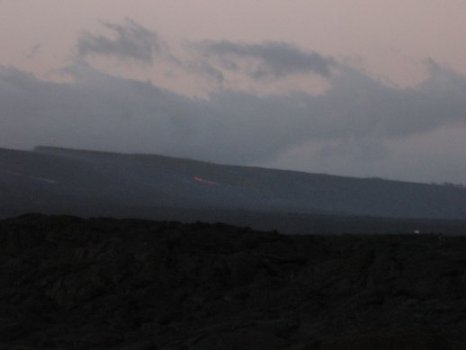 |
Our cameras were able to capture images of the bright breakout as it got darker, too, and thus easier to see, and more impressive all the time:
 |
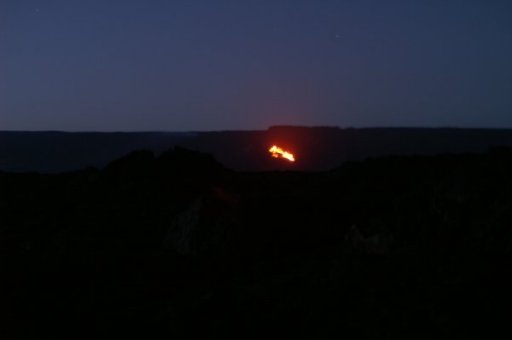 |
I'll conclude this collection of photos with a larger version of the thumbnail at the top of this page, our favorite shot of the Pu'u O'o vent as it enters the ocean, making more land for the Big Island:
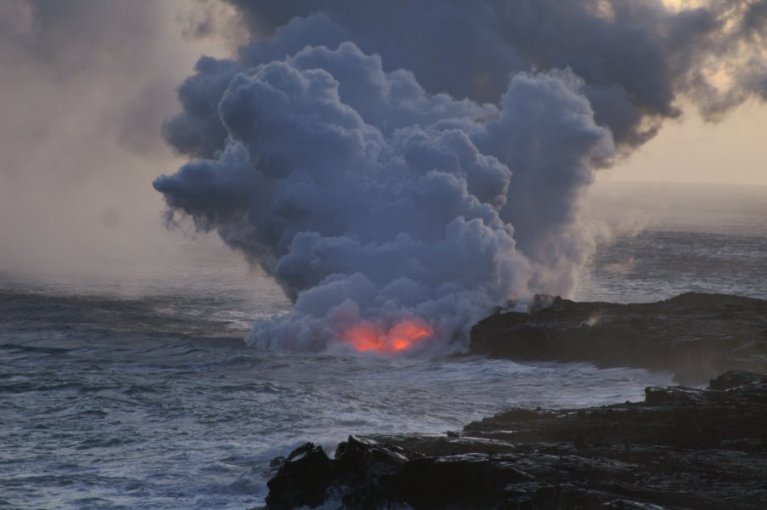
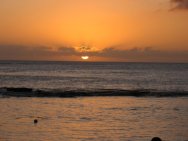 |
 |